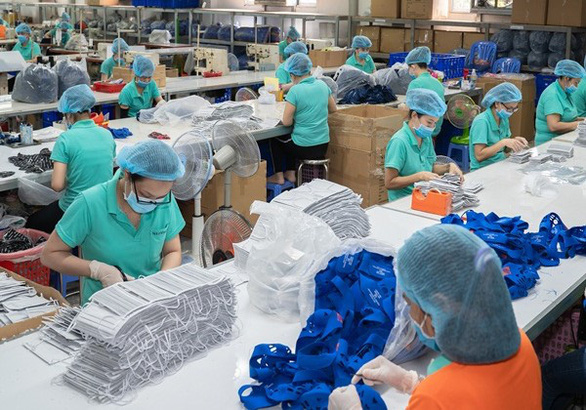In part 1, I looked at the effect on the Vietnamese economy of the novel coronavirus disease (COVID-19) pandemic and the scale of the problem locally.
Now, as part of Vietnam’s remarkable recovery, it stands to move on and build up again, so let’s explore some of the options for Vietnam.
Obviously, every nation at the stage of bringing down the COVID-19 infection rate and hopefully lifting lockdown restrictions is thinking of how to rebound from the financial costs of the health treatments and lockdown losses to business. Such countries also think of how to regain or recover the eye-watering amounts of money spent on supporting people, livelihoods and entire industries.
In an odd way, Vietnam might be a Goldilocks country.
It is not too big in any major industry — car-making, aircraft production and high-tech goods — although it is involved in these sectors; not too small — a large, young population and a decently sized domestic market not too far from the rest of the world. It is not overwhelmed medically — a critical factor meaning that patients suffering from other ailments are not dying because of overcrowded hospitals. The Southeast Asian country is positioned well between the major opposing economies of China and the U.S., earning money from both and making good inroads in the EU and regional markets.
'Regional' means Vietnam’s traditional market relationships with its neighbors — Thailand, Indonesia and the Philippines, and further Japan and South Korea, both big investors in the country.
For example, the Philippines recently mentioned a 'sigh of relief' as Vietnam’s rice exports began moving again to its neighbor.
A scramble to meet its food supply requirements would have involved piecemeat deals around the Southeast Asian region and a significant time delay.
Both Indonesia and the Philippines are also major importers of Vietnamese-manufactured generators, water pumps, electric appliances, and telecommunications equipment.
As Vietnam takes the leadership of ASEAN, it is now ideally placed to promote itself even further into regional markets which often have preferential tariffs with the geographical advantage of shorter and quicker transportation routes than to the Western markets.
This has been a somewhat neglected or overlooked option that could accelerate Vietnam’s economic recovery.
Interestingly enough, working with agents and businesses in regional markets would be easier than the tougher challenge of entering Western markets or attracting businesses to start up within Vietnam.
Thankfully there is keen interest from foreign direct investment (FDI) companies in Vietnam. Both Apple and Samsung are looking for managers, engineers and skilled workers for projects locally; Google and Microsoft are soon to begin high-tech manufacturing here as well.
Foxconn, a Taiwanese electronic parts maker, has plans to expand its factories in Vietnam, too, seeking Vietnamese government permission to build a 600-hectare industrial park in Bac Giang to move more production there.
However, Vietnam is up against tough competition from India, Thailand and Malaysia — all offering tax breaks and financial incentives and highlighting their ability to take on large-scale projects using up-to-date technology, equipment and easier exporting infrastructure.
Vietnam has a more modest manufacturing ability and sits in the middle of supply chains for parts rather than producing everything ‘from go to whoa.’
Yet Vietnam does offer many incentives for large FDI projects and participates in a high number of free trade agreements. Also, the Vietnamese dong has been very stable for a long time.
Certainly, the rest of the country should adapt to the current situation faster, with more transparency regarding legal issues in attracting FDI and setting up businesses here, and finally make importing and exporting simpler. There are far too many restrictions, and fees, requiring paperwork to multiple government agencies.
Phan Huu Thang, former director of the Foreign Investment Agency, has pointed out this need to modernize the business environment and adopt the experience of Ho Chi Minh City which has been very successful in attracting FDI.
Aiding the supply of medical equipment and related products to countries reeling from COVID-19 is another potential bright spot.
Vietnam’s richest man, billionaire Pham Nhat Vuong who heads Vingroup, plans to export ventilators around the world.
The design sourced from device maker Medtronic Plc can be made quicker and cheaper than others, retailed for around US$7,000 in Vietnam.
As of the end of June, the company had been granted approval to begin production.
Both Africa and South America would be immediate targets and a mix of goodwill supplies and efficient supply chains will increase Vietnam’s reputation as an exporter of high standard goods.
Vingroup also has plans in the middle of 2021 to start producing electric cars for the American market and such an achievement could change the way the world views Vietnam.
Just as Japan proved to the world it could make modern, high-tech products many decades ago, so it is up to Vietnam to achieve the same goals now.
In part 3, I will write about what more Vietnam can do to rise above the pandemic storm and transform its economy quickly enough to take advantage of the current window of opportunity.


















































